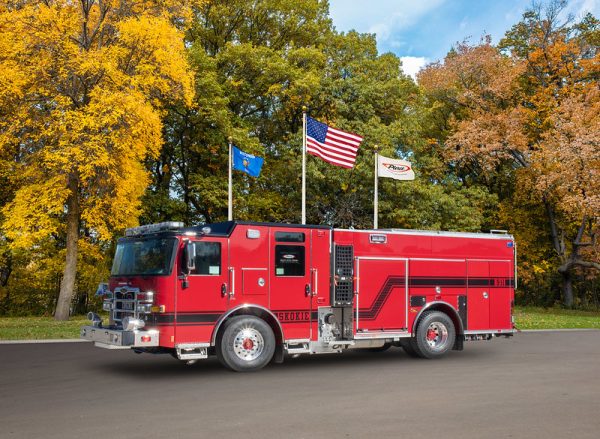Andrew S. “Andy” CuttingJuly 4, 1968 – January 20, 2023Andrew S. “Andy” Cutting, age 54, died Friday, January 20, 2023, at his home.
He was the beloved husband of Karla, née Madison; devoted son of Robert and Carole, née Balderson; and dear brother of John and Brett.
Andy committed his life to caring for others. He was a firefighter and EMT in his native homeland of Australia, and after migrating to the United States, he served as a paramedic, firefighter and engineer in the Skokie Fire Department for more than 20 years.
He was also a lifelong musician who played keyboards and percussion in bands around the globe. In his free time, Andy enjoyed traveling with his wife, attending live music concerts, visiting wine regions of the world, and lavishing attention on his dog, Bindi.
Funeral Service, with Fire Department Honors, Saturday, February 11, 2023, at 2 p.m., at St. Peter Catholic Parish Chapel, 8140 Niles Center Rd., Skokie.
In lieu of flowers, memorial contributions may be made to Shield 23 Foundation, 6615 Grand Ave., Suite B-232, Gurnee, IL, 60031 (shield23foundation.org) or Felines & Canines, P.O. Box 60616, Chicago, IL, 60660 (felinescanines.org).
Funeral info: 847.673.6111 or habenfuneral.com to sign guestbook and to leave a condolence message.
To send flowers to the family or place a tree in memory of Andrew S. “Andy” Cutting, please visit our Tribute Store.
Posts Tagged Skokie Fire Department
Skokie Fire Department news
Jan 21
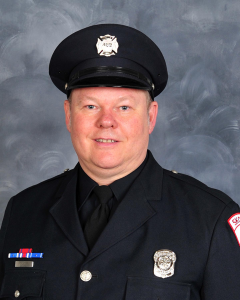
Skokie FD Firefighter Andrew Cutting
From Skokie Fire Department Firefighter’s Local 3033:
Yesterday we lost a brother. Andrew Cutting served the Skokie Fire Department for 21 years. He was loved by everyone and will be greatly missed. Please keep his family and friends in your prayers.
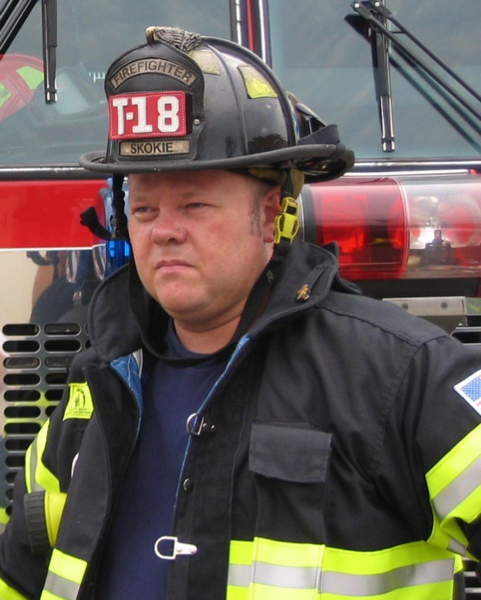
Skokie FD Firefighter Andrew Cutting
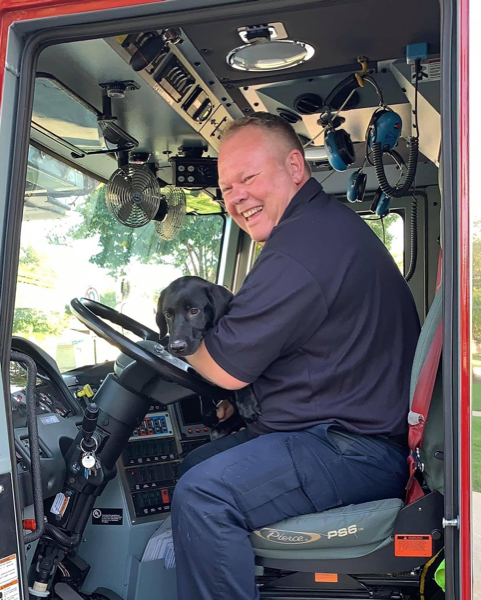
Skokie FD Firefighter Andrew Cutting
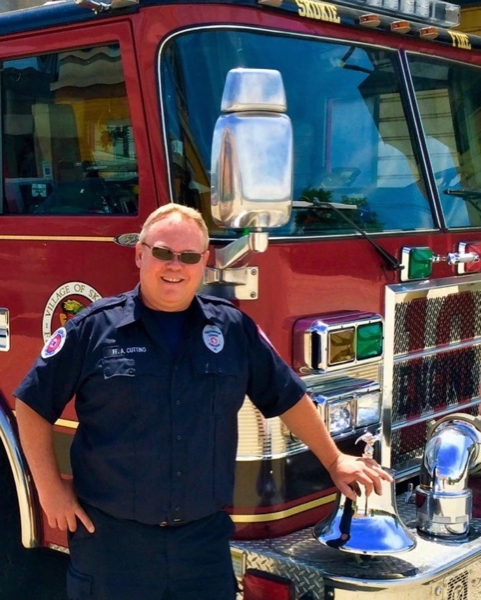
Skokie FD Firefighter Andrew Cutting
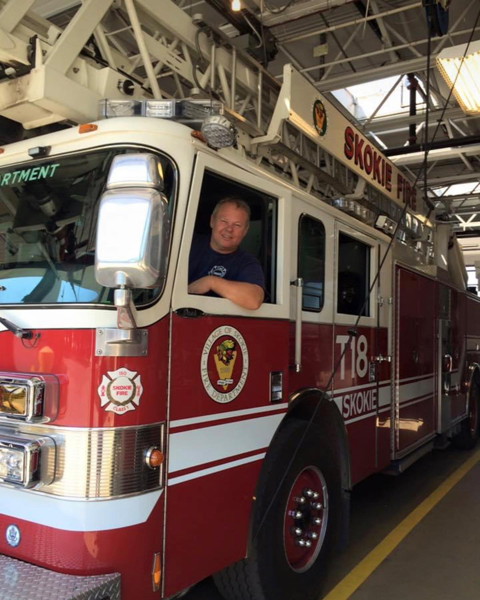
Skokie FD Firefighter Andrew Cutting

Skokie FD Firefighter Andrew Cutting and friends

Skokie FD Firefighter Andrew Cutting and friends

Skokie FD Firefighter Andrew Cutting
Excerpts from abc7chicago.com:
A Christmas tree is to blame for an apartment fire in Skokie Saturday night that left one firefighter injured.
The fire broke out during a New Year’s Eve party on North Kilpatrick but everyone was able to get out of the building.
One firefighter suffered minor injuries.
Four families are also now displaced due to the blaze.
Excerpts from cbsnews.com:
A Skokie Fire Department ambulance transporting a critically ill patient to the hospital was involved in a crash with a car near Gross Point and Golf Road Saturday morning.
Paramedics performed CPR on the patient until another ambulance could arrive. The patient later died at the hospital. Police do not believe the crash contributed to the patient’s death.
No one else was hurt in the incident.
thanks Rob
From Phil Stenholm:
Another installment about History of Evanston Fire Department
Prior to introduction of the 9-1-1 emergency telephone number, a person would have to either dial a specific seven-digit phone number that would connect them with the police or fire department (phone numbers not known to everybody) or else call the operator (dial “0”) and request to be connected with the police or fire department. By calling 9-1-1, a person could report a police, fire, or medical emergency without having to remember a seven-digit phone number or involve a telephone operator. Also, if a person was unable to speak, a 9-1-1 call could be “locked in” and traced. To help publicize the new program, “DIAL 9-1-1 TO REPORT AN EMERGENCY” bumper stickers were placed on all Evanston police and fire department vehicles in 1974.
The concept of the “paramedic” in a non-military, civilian environment, was introduced on a limited basis in several American cities in the late 1960’s, mainly to improve life-saving care to cardiac patients. In 1972, the NBC-TV series Emergency! provided the American public with a weekly glimpse into the world of Los Angeles County Fire Department paramedics, helping to spread the idea across the nation. What was unique about the Los Angeles County Fire Department’s paramedic program was that firefighters were cross-trained as paramedics.
In the Chicago area, fire departments with a tradition of providing ambulance service were the first to train paramedics and place Advanced Life Support (ALS) Mobile Intensive Care Unit (MICU) ambulances into service. The Niles Fire Department – which had provided ambulance service to its residents since 1946 – established a paramedic-program in 1973. The Skokie Fire Department placed two MICU ambulances staffed with paramedic firefighters into service in 1975, replacing its two 1969 Cadillac Basic Life Support (BLS) ambulances.
The Chicago Fire Department, which had provided ambulance service since 1928 and had 33 Cadillac and Pontiac BLS ambulances in service in 1974, placed their first two paramedic-staffed MICU ambulances into service in July 1974, with Ambulance 41 replacing Ambulance 1 at E1/T1 and Ambulance 42 replacing Ambulance 21 at E13. Five additional CFD MICU ambulances were in service by the end of 1974, with Ambulance 43 replacing Ambulance 11 at E22, Ambulance 44 replacing Ambulance 24 at E57, Ambulance 45 replacing Ambulance 2 at E103, Ambulance 47 replacing Ambulance 7 at E108/T23, and Ambulance 16 at O’Hare Field.
The City of Evanston borrowed an MICU “demonstrator” – minus the drugs and the specialized ALS gear only paramedics would be certified to use – from the State of Illinois Department of Public Health in June 1974, and it was tested over a 60-day period by the EFD. It was a modular ambulance, meaning it was a cab & chassis with a “box” mounted on top of the chassis. Personnel from Squad 21 were assigned to the unit (known as Ambulance 1) and responded to inhalator calls and ambulances runs city-wide throughout the summer. An engine company was dispatched as a “first responder” for inhalator calls outside Station # 1’s first-due area.
Although the fire department was testing the MICU ambulance, Evanston Mayor Jim Staples wanted police officers – NOT firefighters – to be trained as paramedics, with the Evanston Police Department – NOT the Evanston Fire Department – operating the MICUs! He wanted the ambulances to be out on the street 24/7, just like the police patrol-ambulances.
Evanston Police Chief William McHugh was apoplectic, saying there was no way his police department wanted any part of the new emergency medical service (EMS). Crime was on the rise in Evanston, gang activity was starting to become a problem, and the police department was hard-pressed just to provide rudimentary “throw-and-go”style ambulance service, without having to commit personnel and resources to a sophisticated new program.
On January 21, 1974, the city council authorized funds to purchase a second pumper with the exact same specifications, and Howe once again was awarded the contract by offering to supply the second pumper for $44,575 (slightly higher than its bid for the first pumper, but still below the Pirsch bid), but with the understanding that the price would go up substantially if the contract was not signed by February 5th. The city council wasted no time, and the contract was signed immediately.
The two new Howe – International pumpers were to replace the two 1958 Seagrave 1000 / 300 open cab pumpers at Station # 3 and Station # 4. On the orders of Chief Beattie, both of the Howe rigs were painted “safety yellow,” had rear-facing jump seats so that firefighters would no longer need to ride on the tailboard, were equipped with electronic sirens to be set in manual mode to reduce noise pollution, and had only one rear discharge port for a 1-1/2 inch pre-connect line, instead of the two rear discharge ports and two 1-1/2-inch pre-connects that had been standard on EFD pumpers since 1958. By eliminating one of the pre-connected attack lines, there would be more room in the hose-bed for larger-diameter hose.
Instead of a second rear discharge port and a second 1-1/2-inch pre-connect hose line, Chief Beattie specified that the new pumpers have a top-mounted booster reel (sometimes called a red line) that could be led-out quickly at a car fire, trash fire, brush fire, or gas wash, and in some cases even at a structure fire. EFD pumpers had not been ordered with booster reels since the Pirsch pumpers in 1952, something Chief Beattie believed was a mistake.
Also in 1974, the WWII-era DUKW amphibious vehicle (F-7) that had been in service with the EFD since 1964 and the rescue trailer acquired from the Federal Civil Defense Administration in 1954 were taken out service. Some of the equipment and gear carried in the trailer was placed in storage at Station # 1, in the event that it might be needed for a tornado, flood, airplane crash, or some other disaster or mass casualty event. A 17-foot Boston Whaler (the new F-7) with an outboard marine engine and a boat trailer were purchased to replace the DUKW as the EFD’s Lake Michigan rescue vehicle, with a trailer hitch installed on the new van so that it could tow the boat & trailer to the Church Street Boat Ramp if it was needed.
The first of the new Howe – International pumpers arrived in November 1974 and was placed in service at Station # 3 as the new Engine 23 (fleet # 326), and the second Howe – International pumper arrived in May 1975 and was placed in service as the new Engine 24 (fleet # 324) at Station # 4. The 1958 Seagrave pumper that had been running as Engine 23 was placed into reserve at Station # 3 as Engine 26, and the 1958 Seagrave pumper that had been running as Engine 24 was sold at auction.
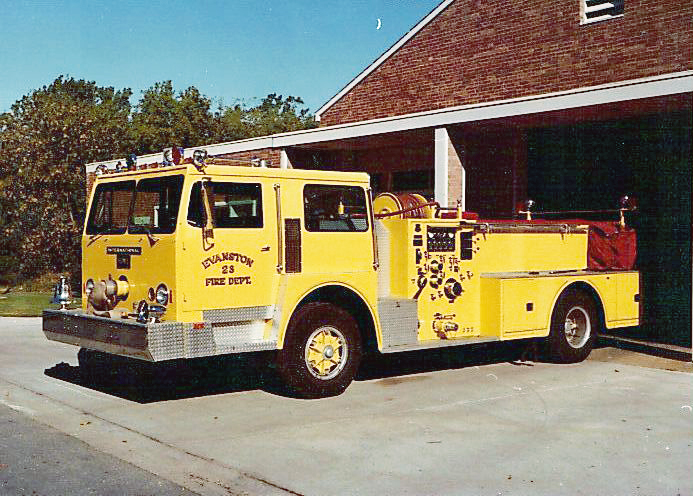
photographer unknown
New engine for Skokie
Dec 4
This from Max Weingardt:
Skokie Box Alarm 9053 Tamaroa Terrace 11/19/21
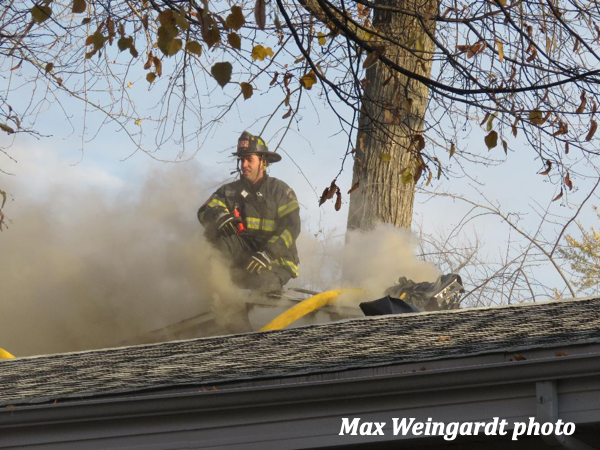
Max Weingardt photo
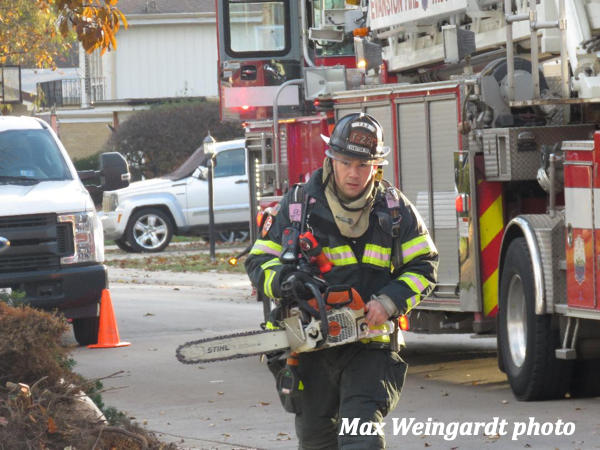
Max Weingardt photo

Max Weingardt photo

Max Weingardt photo
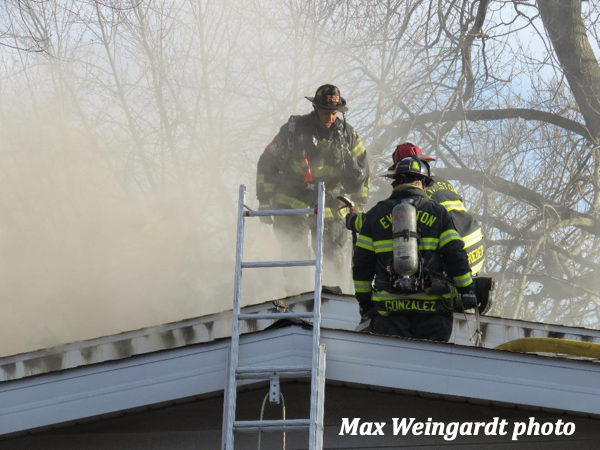
Max Weingardt photo
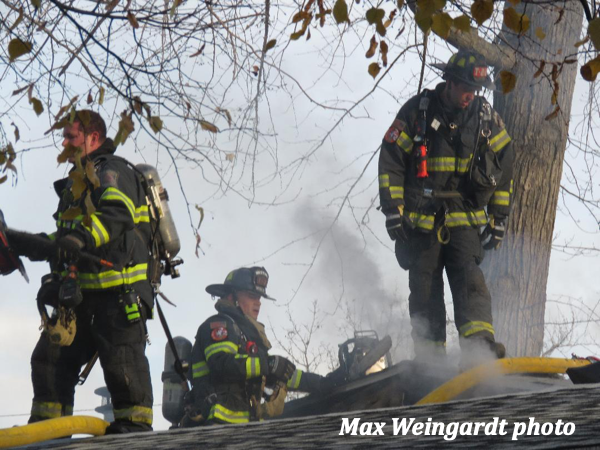
Max Weingardt photo
As seen around … Skokie
Sep 13
This from Chi-Town Fire Photos:
Here is a shot of Skokie Truck 18 which was recently refurbished.
2001/2020 Pierce Dash0/0/100’ RM aerialJob #12329Refurb #F7280
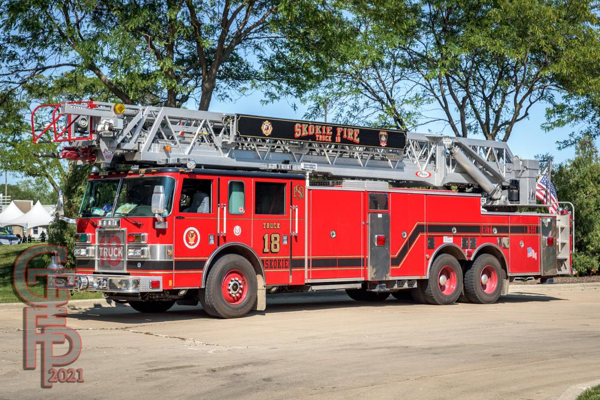
Chi-Town Fire Photos
From the Skokie Fire Department Firefighter’s Local 303 Facebook page:
Welcome back Truck 18, officially back in service!
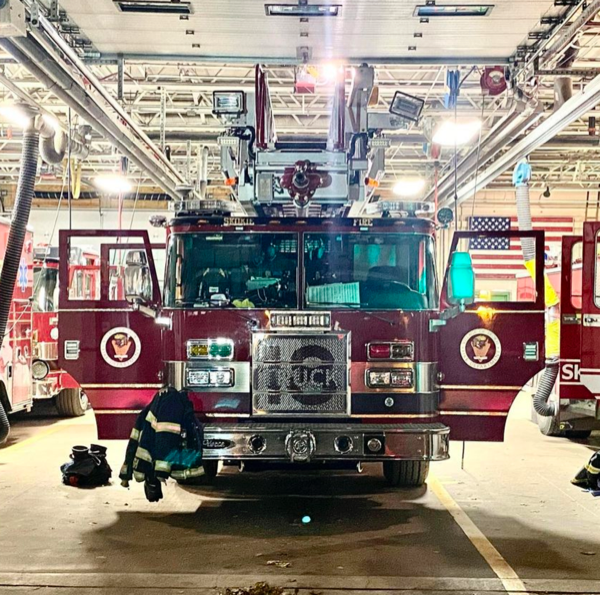
Skokie Fire Department Firefighter’s Local 303 photo

Skokie Fire Department Firefighter’s Local 303 photo
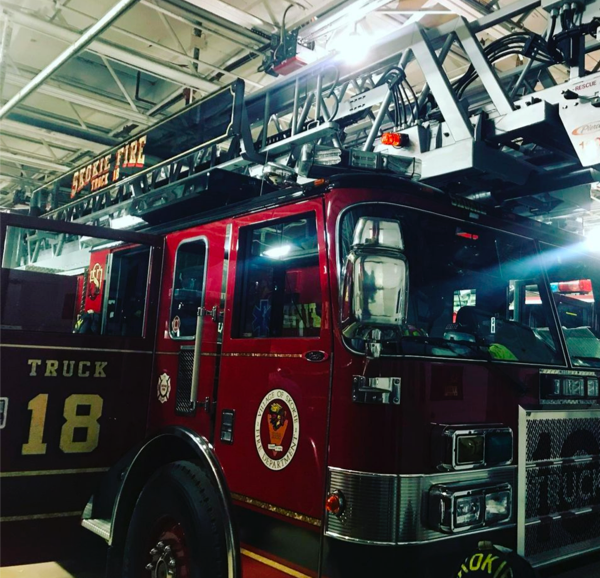
Skokie Fire Department Firefighter’s Local 303 photo
